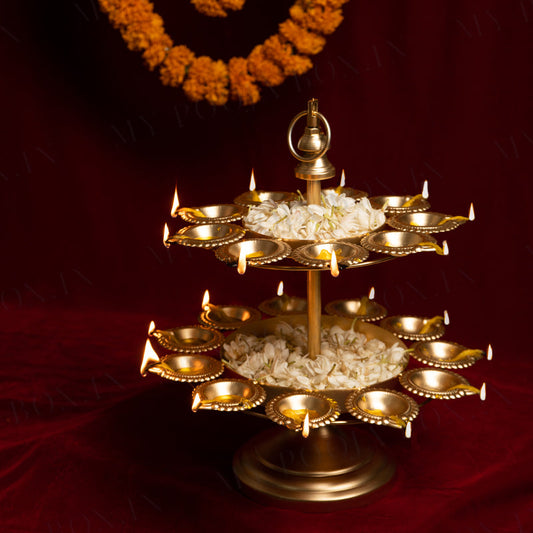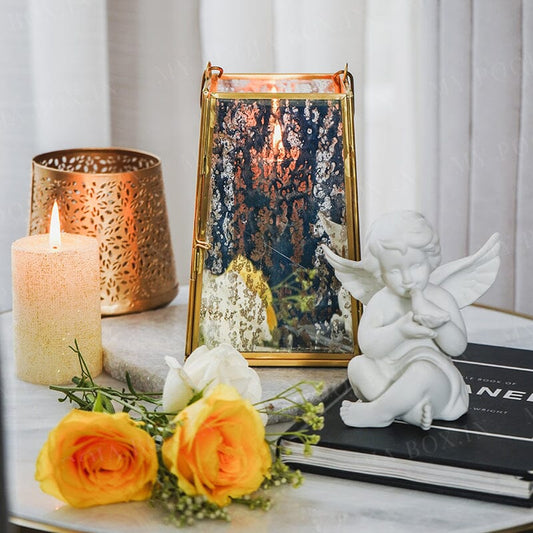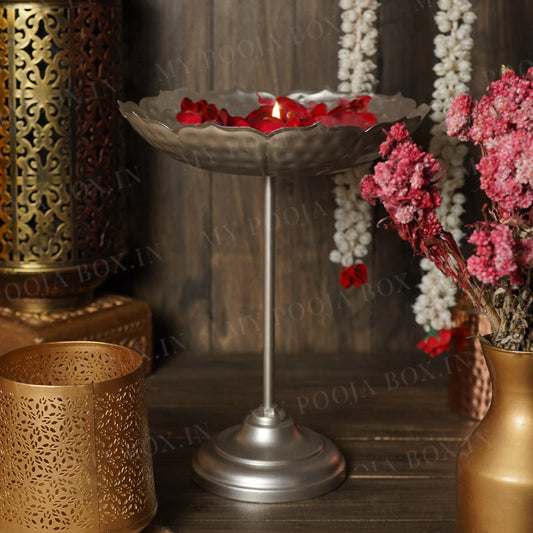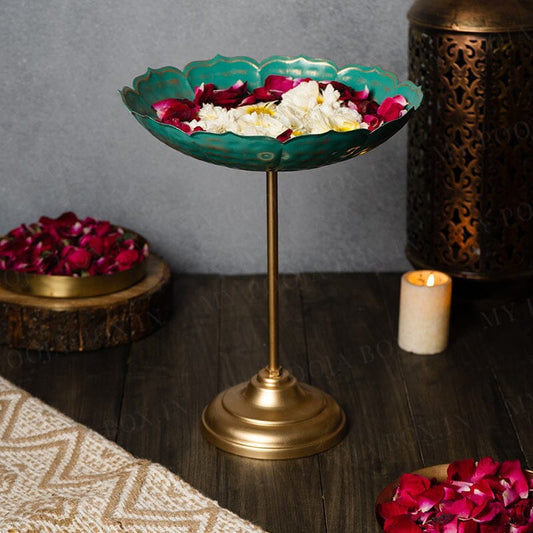Navratri is a festival celebrating the goddess Durga, the most powerful mother figure in Hinduism. She is worshiped for her many forms, which all have different roles and personalities. Durga is usually depicted as a beautiful woman riding a lion and wielding a lotus flower. She has many different names, but they're all derived from "mother" or "goddess." The goddess has nine primary forms, each representing a different aspect of feminine power.
Navratri is celebrated for nine days, starting with Dussehra and ending on the tenth day of Ashwin month. As per the Hindu calendar, these nine days are significant because they mark the triumph of good over evil.
Devotees gather all Navratri pooja samagri for the rituals. They celebrate the festival by cleaning their homes and decorating with Navratri decoration items like flowers, rangolis, diyas, etc. Maa Durga's nine different forms are worshipped with varying offerings during these nine days.
Nine various forms of Maa Durga worshipped during Navratri are :
1. Goddess Shailputri
Shailputri is the first manifestation of Maa Durga, who rides a bull named Nandi and holds a Trishul and a lotus in both her hands. Goddess Parvati, meaning "mountain-dwelling girl," was born as the daughter of Himalaya and is thus known as Shailputri.
2. Goddess Brahmacharini
Goddess Brahmacharini is worshipped by devotees on the second day of Navratri. She holds a Rudraksha mala in one hand and sacred Kamandalu in another. The goddess symbolizes Parvati's deep meditation to please Shiva in this form.
3. Goddess Chandraghanta
Devotees worship Goddess Chandraghanta on the third day. She has ten arms and rides on a tiger to destroy evil forces. She has a crescent moon on her forehead, giving her one of many names: Chandraghanta
4. Goddess Kushmanda
On the fourth day of Navratri, Hindus celebrate Devi Kushmanda. The name Kushmanda comes from three words — 'Ku' (little), 'Ushma' (warmth or energy), and 'Amnda' (egg)—which together mean "the creator of the universe."
5. Goddess Skandmata
Skandmata is the goddess worshipped on the fifth day of Navratri. She has four arms and holds a lotus, water pot, and bell in those hands. Because of the presence of Kartikay on her lap, Kartikay is also known as Skanda. She is seated upon a lotus flower.
6. Goddess Katyayani
Katyayani is a form of the goddess Shakti and is considered one of her most violent incarnations. She is a four-armed deity who carries a sword. Sage Katyayan is her father, and she rides on a lion.
7. Goddess Kaalratri
The seventh day of Navratri, Saptami, is dedicated to Kaalratri. Legends tell us that she sacrificed her fair complexion and became dark to kill demons. She is a four-armed goddess who rides on the shoulders of a donkey and carries various weapons, including an axe, trident, and rope. Her third eye contains the entire universe.
8. Goddess Mahagauri
On the eight-day of Navratri, worshippers dedicate themselves to Mahagauri, a four-armed goddess. She rides on a bull and carries a trident and drum in her hands.
9. Goddess Siddhidatri
On the ninth day of Navratri, people worship Goddess Siddhidhatri. She is a four-armed deity who sits on a lotus and holds a mace, discus (or conch shell), and book in her hands. This form of Maa Durga symbolizes perfection.
Dos and Don'ts of Navratri Pooja:
During Navratri, Maa Durga and other gods are believed to be present in their most powerful avatars. Therefore, you must perform the puja with reverence and honesty. Some certain dos and don'ts need to be followed during Navratri:
Dos during Navratri
- Do Kalash Sthapana or Ghata Sthapana.
- Light diyas every day for the nine days.
- Perform aarti in the mornings and evenings for nine days.
- Include the path of Durga Chalisa in your everyday Navratri rituals.
- Wear red clothes during the pooja.
Don'ts during Navratri
- During Navratri, fasting devotees should avoid getting a haircut or shaving.
- During this time, it is customary not to cut one's nails.
- Garlic and onion are tamasic in nature, meaning they can harm the mind or body. To keep attention during purification rituals such as Navratri pooja, one should eat a sattvic diet.
- During Navratri, individuals should refrain from eating garlic, onion, grains, and all non-vegetarian foods.
- Devotees should not cut/slice lemons during Navratri as it is considered inauspicious.
- Devotees should avoid eating fried food during this festival because it defeats the purpose of purifying one's mind and body.










